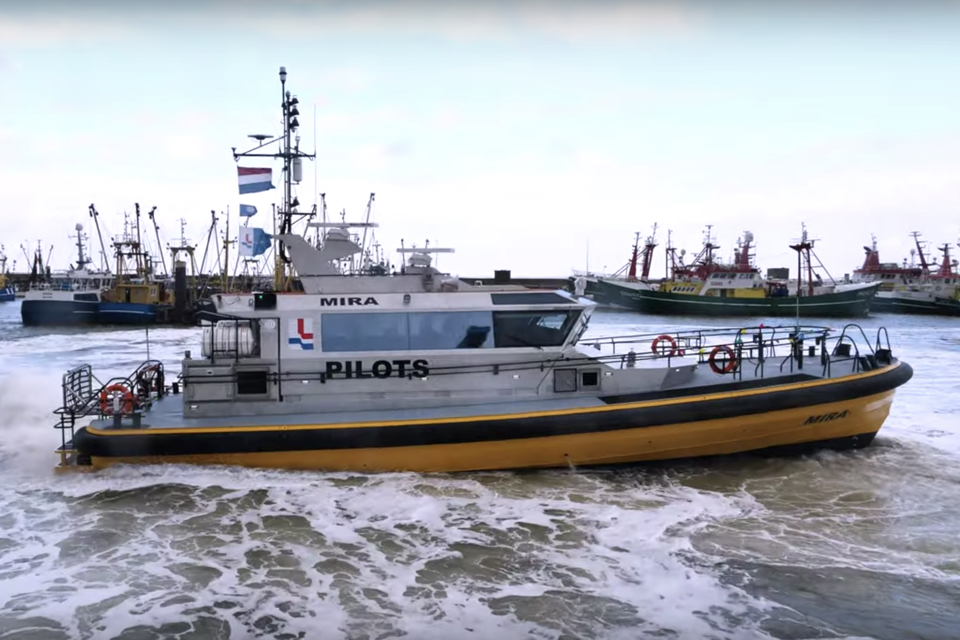Nederlands Loodswezen has christened its new pilot tender Mira. The vessel is special because of its weight: just 39 tonnes compared to the 54 tonnes of its predecessors. ‘We achieved this mostly by smart design choices,’ says Albert Keizer, Managing Director at Next Generation Shipyards.
The christening ceremony took place at Next Generation Shipyards on 2 April and was performed by Annebel de Deugd, interim fleet manager of Nederlands Loodswezen (the Dutch Pilotage Service).
Lighter than ever
Nederlands Loodswezen awarded the contract for the tender to ship designer Camarc and shipbuilder Next Generation Shipyards. Their assignment was to design and build a strong, jet-driven aluminium tender that is much lighter than its predecessors. With the lower weight of 39 tonnes, more than twenty per cent less fuel is needed and the ship emits less CO2 and soot.
The Mira – a tender from the M-class – has the same hull as its predecessors from the L-class, but is equipped with an axe bow. This alone results in fuel savings of three per cent. In addition, every part of the ship has been examined and – where possible – adapted to reduce the weight as much as possible.
Usually when such weight savings are achieved, different construction materials will be used, most notably composites. ‘But this is not the case here,’ says Keizer. ‘Firstly, Camarc sought to optimise the design as much as possible. Then we looked at every part of the ship and investigated where we could save weight for each design choice we made. So, it was much more about smart design choices.’
Reducing the amount of materials needed
‘Usually, when you have a ship’s hull, you would have to build in foundations for extra strength. We looked at adjusting the shape of the deck for example as well as other parts of the ship, to make them part of the structure and thereby act as foundations. This significantly reduced the amount of materials needed,’ Keizer explains.
Reducing the amount of materials also went beyond the ship’s structure. ‘As we already looked at reducing weight early in the design phase, we also managed to create an optimal routing for pipes and cables for example,’ adds Keizer. ‘If the routing is as short as possible, this also saves weight. Of course, we also looked at lighter materials where possible, such as the soundproofing materials used on board.’
Fleet renewal
The Nederlands Loodswezen has a multi-year investment programme for its fleet. This fleet includes fifteen jet driven tenders. These tenders are used to bring registered pilots to and from seagoing vessels that want to call at the Dutch ports and Flemish seaports on the Scheldt. The new tender Mira will replace one of the Discovery class tenders now that they have reached their maximum lifespan.
[youtube id=”63VMP-inA1o”]








